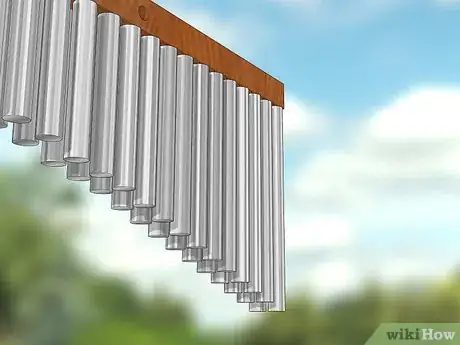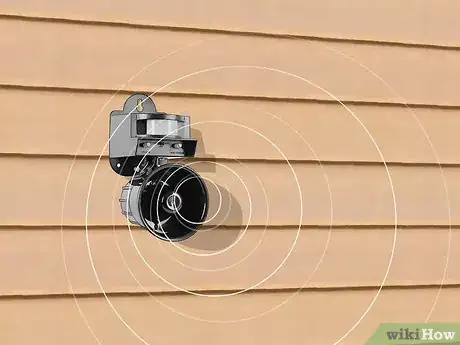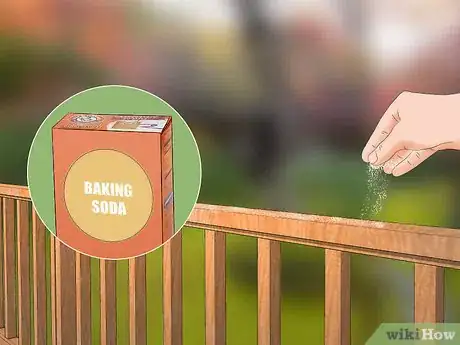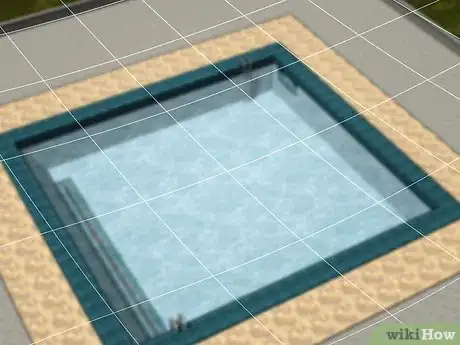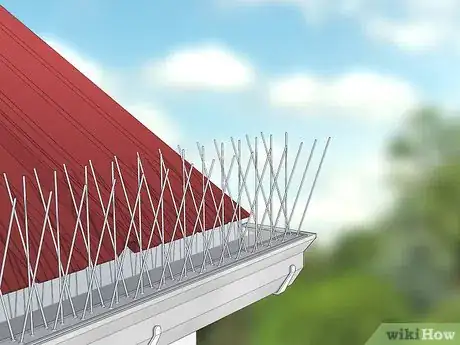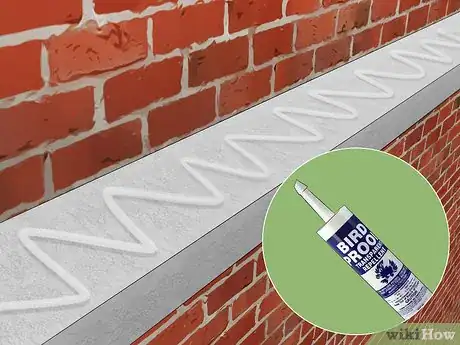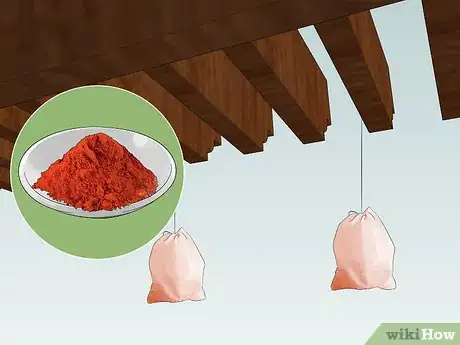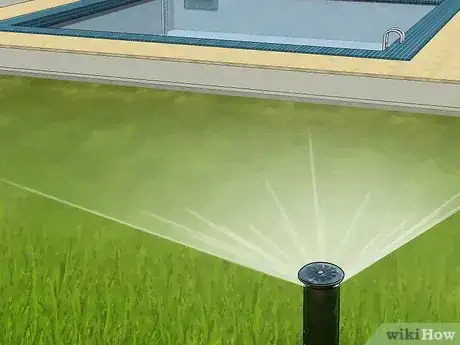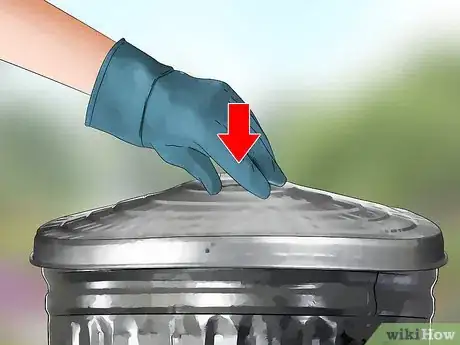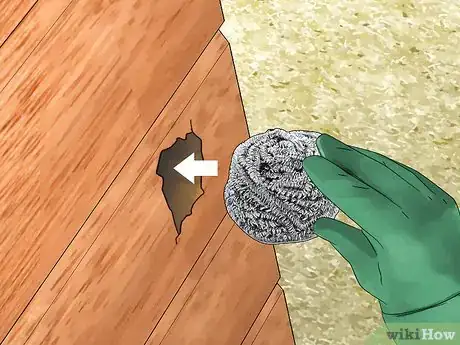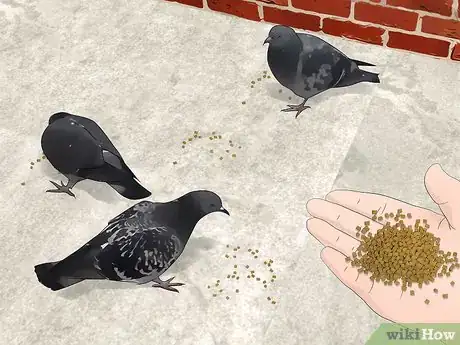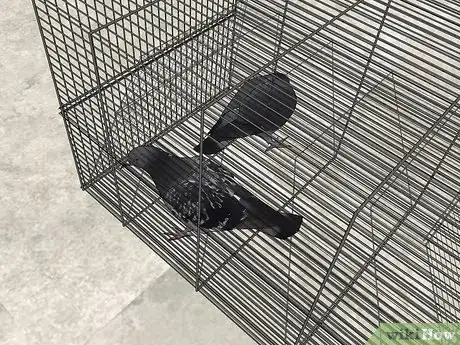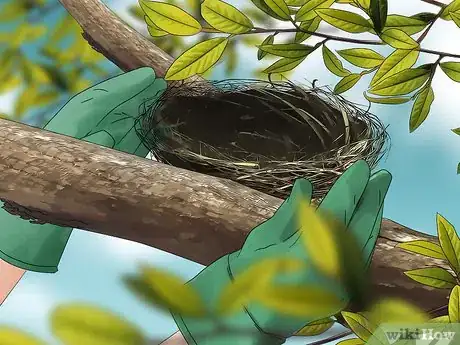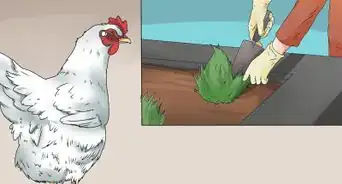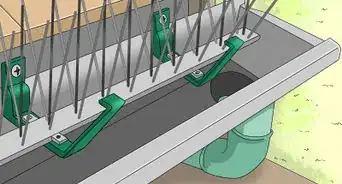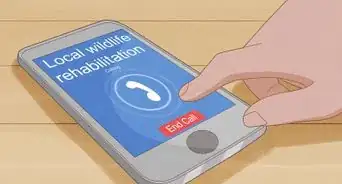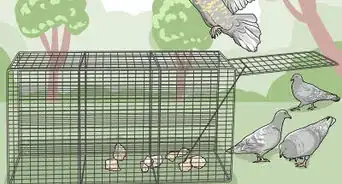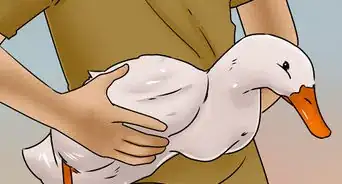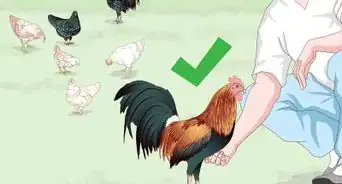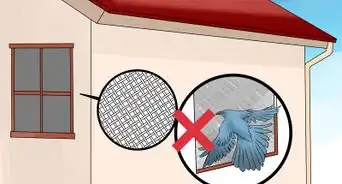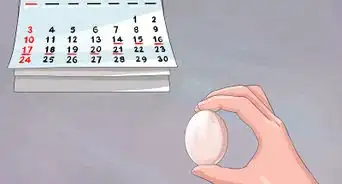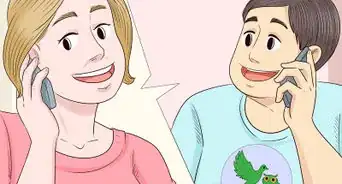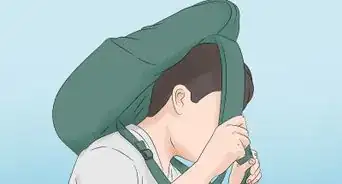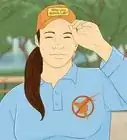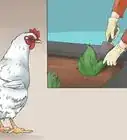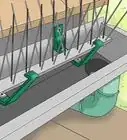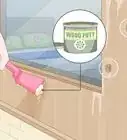This article was co-authored by Elmer Bensinger. Elmer Bensinger is a Pest Control Specialist with Eden Advanced Pest Technologies in Spokane, Washington. With over 20 years of experience, Elmer specializes in integrated pest management and products such as insecticides and rodenticides. He studied business at South Puget Sound Community College.
There are 16 references cited in this article, which can be found at the bottom of the page.
This article has been viewed 45,861 times.
Even though birds can sometimes be a welcome addition to your yard, they can also become pests when they eat your plants, roost in your trees, and cause damage to your property. Although they’re usually more of a nuisance than a real threat, birds' droppings can also pose health risks, especially for those with weakened immune systems.[1] Luckily, there are plenty of home remedies and repellents to scare birds away from gardens, porches, pools, houses, and other areas.
Steps
Using Visual and Auditory Deterrents
-
1Wrap scare tape around tree branches, railings, and fences. You can purchase a reflective tape known as “scare tape” or “deterrent tape” online or at your local home and garden store. This tape has a holographic or shiny exterior that reflects sunlight, shining in birds eyes and deterring them from your property. It also makes a rustling sound in the wind for additional repelling ability. Try wrapping it around tree branches, railings, fences, or anywhere else you’d like to keep birds away from.[2]
- Scare tape is completely harmless to birds: it simply makes your property look unappealing to them.[3]
- For a cheaper option, you can also use aluminum foil. Try placing it in the dirt around any vulnerable plants and slightly burying the edges to keep it in place.[4]
- Both scare tape and aluminum foil will lose their effectiveness as their shininess fades so be sure to replace them regularly.
-
2Hang flashy objects from trees and other high points. Similar to scare tape, flashy objects reflect sunlight, bothering birds eyes. To keep birds out of your trees, try hanging strips of foil, shiny party streamers, old CDs, or aluminum pie plates from the branches. You may want to hang a few from the eaves above your deck or patio. These objects will make your property uninviting to birds without actually harming them.[5]
- You can also purchase commercial products that may look a bit nicer and more effectively reflect the light.[6]
Advertisement -
3Place a fake predator to deter birds. Use a plastic owl or rubber snake to trick unwanted birds into thinking your property is unsafe for them. You can purchase fake bird predators online or at your local hardware or home and garden store. Birds can adapt to non-moving objects, so be sure to move the predators around at least once a day to ensure birds continue to think that they’re real.[7]
- If you’re having trouble with geese, use a fake coyote instead, since owls and snakes may not be large enough to scare these bigger birds.[8]
- If you have a larger property, you can also make a scarecrow. Again, be sure to move it frequently so the birds don’t figure out it’s not real.
-
4Put up wind chimes for a more subtle option. Sound can be a good weapon to keep birds away, but it doesn’t have to be particularly loud or grating to be effective. In some cases, wind chimes can provide enough unexpected noise to frighten birds away. You can either purchase a commercial wind chime or make your own.[9]
- Unsurprisingly, wind chimes will be less effective if you live in an area without much of a breeze.
-
5Mimic bird distress or alarm calls over a speaker. Mimicking the noises birds make when they are distressed or the sounds of a predator species (like a hawk or eagle) can help you create the impression that your property is unsafe for birds. You can purchase a device that emits these sounds by searching online or visiting a well-stocked hardware store. You can also mimic these noises yourself by searching “bird distress calls” or “bird predator calls” on YouTube and then playing the sounds over a speaker placed in a window.[10]
Opting for Physical Impediments
-
1Sprinkle baking soda on railings to bother birds’ feet. If you have a patio or porch that tends to attract pigeons and other birds, try sprinkling baking soda on the railings where they perch. Although it will not poison or harm them, birds don’t like the feeling of the baking soda under their toes and they may avoid the area in the future.[13]
- You can also try laying down duct tape with the sticky side facing up. Use additional duct tape to secure it to the railing on either end.[14]
-
2Use fishing line to create a net above pools or roofs. Run fishing line in a criss-crossing pattern high over your pool or flat roof by tying it to trees, eaves, flagpoles, or other high items. If the wire is thin and you hang it high enough, you likely won’t even be able to see it. Birds, however, will be annoyed by the impediments to their flying and will likely find somewhere less difficult to land.[15]
- If you don’t have natural high points to hang fishing wire above your roof, you could use a line of cinder blocks or attach a series of posts to the sides of your roof.[16]
-
3Install anti-roosting bird spikes for a more permanent solution. Anti-roosting spikes are available at most home and garden centers, hardware stores, and online. They can be attached anywhere birds tend to roost including parapets and open ledges, roof ridges, signage, railings, and external lighting fixtures. When properly installed, they can create an “unperchable” environment for pesky birds.[17]
- Although they may appear menacing, anti-roosting spikes do not actually harm birds. They simply create a surface that is difficult for them to land and roost on.[18]
- Anti-roosting spikes can be expensive and take time to install. However, they are one of the most reliable deterrents and will continue to work for years.
- For a lower cost alternative, try using a slinky (the coiled metal children’s toy). Simply extend the toy and attach it to the top of a railing using duct tape. The barrier of the coils will function like anti-roosting spikes, making it difficult for birds to find a comfortable spot to perch and roost.
-
4Spread a commercially made bird repellent. Commercial repellents usually come in a paste or gel from, but you can also find them in sprays and powders online or in your local home and garden store. The repellent provides a sticky, slippery, or tacky layer on top of surfaces that make it difficult for pesky birds to perch and roost. Make sure to cover all likely gathering spots (such as railings and ledges) or the birds will simply find another space on your property to congregate.
- Commercial bird repellents can be a great option for renters who can’t install more permanent solutions to keep birds away.
- Bird repellent is nontoxic to birds and other animals, but it can stain painted surfaces. To protect any painted areas, cover them with masking tape before applying to substance.[19]
- Make sure the product you purchase is environmentally safe and does not contain polybutylene, which can harm all birds and animals that come into contact with it.[20]
-
5Utilize spices for a homemade deterrent option. Organic, homemade deterrents can also be fairly effective in keeping birds away. Wrap a generous amount of a strong spice such as chili powder, cayenne pepper, black pepper, or cinnamon in a cheesecloth. Hang these around your patio or from your windowsills to deter birds without harming them.[21]
- You can also simply sprinkle the spices along railings and windowsills.
- Replace the spices frequently so the deterrents don’t lose their potency.
-
6Turn on a sprinkler to protect your swimming pool area. Water birds such as ducks and geese may be attracted to your swimming pool. To keep them away and prevent them from leaving droppings in your pool, try installing a sprinkler device. The streams of water will annoy the birds and encourage them to find more hospitable places to land.[22]
- If you do find bird feces in your pool, you should close the pool to swimmers and use a net or bucket to remove the bird droppings. Then increase the free chlorine concentration to 2 parts per million (ppm), maintain the pH level at 7.5 or less, and raise the temperature to 77°F (25°C) or higher.[23]
-
7Minimize food sources by properly storing trash and edible scraps. Birds are attracted to anything they can eat, so make sure to keep your trash enclosed in latched bins, a garage, or a shed. Make sure to clean up after any outdoor meals and always clean your grill after you use it.
- If you feed your pet outdoors you can take measures to keep birds away from pet food. Put your dogs on a regular feeding schedule (which reduces leftover food) and always store your kibble properly by keeping it in an animal-proof container or, better yet, storing it indoors.
- Pesky birds such as pigeons can also be attracted to seed you put out for other species. To discourage unwanted birds from visiting your lawn, always put seed into birdfeeders and keep the ground beneath them cleaned up. You may need to stop feeding all birds for a few weeks until the unwanted species goes away.[24]
Blocking Potential Entrances
-
1Use wire mesh to cover all chimneys, vents, soffits, gutters, and eaves. If you’re worried about birds entering your house, shed, or barn, the best way to keep them out is to block any entry points.[25] Use rust-proof wire mesh to screen over any open areas, including chimneys, attic vents, soffits, and eaves. [26]
- Consider installing mesh screens or other commercial protectants into your gutters as well. As a bonus, this can also help keep your gutters free of leaves and other natural debris.[27]
- If you’re concerned about birds become ensnared in the mesh, purchase a hard, non-flexible metal screen with openings less than 1 inch (2.5 cm) wide.[28]
-
2Cover holes with steel wool, wood, or metal. Walk around the outside of your house, barn, garage, or other structure to look for any holes in the exterior walls. If you find any, fill them with coarse steel wool or cover them with wood or metal to completely block them up.[29] Do not rely on caulk alone as a plug, since many birds can easily peck through it.[30]
- Make sure to block even very small holes: sparrows can enter a building through holes as small as 1.25 inches (3.2 cm) in diameter.[31]
-
3Install bird netting in larger areas like barns. Usually made of plastic, bird netting is a larger scale and more flexible option that functions similarly to wire mesh, sealing off enclosed and semi-enclosed areas. Hang it in large spaces such as balconies, garages, barns, courtyards, balconies, or hangars to physically block birds from entering. You can purchase bird netting online or at your local home and garden store.[32]
- Bird netting comes in different sizes meant to keep different types of birds away. 4 inches (10 cm) mesh bird netting keeps out gulls; 2 inches (5.1 cm) mesh blocks pigeons; 1.125 inches (2.86 cm) mesh excludes starlings, grackles, blackbirds, and similarly sized birds; 0.75 inches (1.9 cm) bird netting keeps out small birds like sparrows and swallows.[33]
- Bird netting can be more dangerous to birds than other deterrent options. If poorly installed, birds can become trapped inside and smaller species, like sparrows, can become tangled in the netting itself, damaging their beaks and feet. Even when properly installed, birds’ legs and feet can occasionally get entangled.[34]
Getting Rid of Existing Birds
-
1Spray pesky birds with water from your garden hose. Even water birds don’t enjoy being hit with a steady stream of water, so try blasting unwanted guests with your garden hose. Note, however, that they should be sprayed right when they arrive on your property. If they have time to establish a roost, a slight shower won’t deter them from visiting their nests.[35]
- For a more automated solution, you can purchase and install a motion-activated sprinkler device. This will annoy and scare away birds even when you’re not around.
-
2Limit pigeon flock size with bird birth control. Known as OvoControl, pigeon contraception is a kibble-type food that causes birds who eat it to lay nonviable eggs. You’ll need to feed the birds OvoControl regularly in order for it to be most effective, so make sure to refill your birdfeeders frequently or install an automatic feeder.[36]
- Although relatively new to the market, OvoControl has been shown to effectively reduce hatching rates in pigeons and help diminish flock sizes.[37]
-
3Trap and remove birds that have already roosted. Once birds have built a nest, it can be difficult to get rid of them through deterrents alone. Try making your own trap or purchasing a commercial model to ensnare particularly stubborn birds. Once you’ve caught the offender, you can then remove the birds to another area or kill them, if that is legal where you live.[38]
- In the U.S., most birds are protected by law and cannot be trapped or killed. Before setting a trap, contact the U.S. Fish and Wildlife Service to determine the regulations for your state. They can provide you with guidelines and recommendations.[39]
- Check your traps daily and immediately release any birds you weren’t aiming for. Leave water and food in the trap to attract more birds and minimize stress on any birds that you do catch.[40]
-
4Get rid of the bird’s nest. If you can’t prevent them from roosting in the first place, you may need to remove their nesting materials to get them to leave. Look for collections of twigs, mud and other objects on your property. Then put on rubber gloves and a respirator (to protect yourself from the mites or diseases) before removing and disposing of the nesting items. You may need to repeat this several times before the birds decide to give up and nest elsewhere.[41]
- Before removing the nest, make sure to check local and national animal protection laws. For example, in the US, it is almost always illegal to disturb a nest that has chicks or eggs in it. Additionally, the nests of some birds are always protected, whether or not they contain eggs.[42]
Expert AnswerQCan I just remove the nest I find in my attic?
Elmer Bensinger is a Pest Control Specialist with Eden Advanced Pest Technologies in Spokane, Washington. With over 20 years of experience, Elmer specializes in integrated pest management and products such as insecticides and rodenticides. He studied business at South Puget Sound Community College.Pest Control Specialist
 EXPERT ADVICEAnswer from Elmer Bensinger:
EXPERT ADVICEAnswer from Elmer Bensinger:Definitely not — you're going to need to contact a professional. Once a species has nested, it normally has some protections. The type of protection depends on where you live and the species of the bird, but it's very possible that there may be legal ramifications if you don't have a professional help you with removal.
Expert Q&A
-
QuestionWhy do birds keep coming to my yard?
 Elmer BensingerElmer Bensinger is a Pest Control Specialist with Eden Advanced Pest Technologies in Spokane, Washington. With over 20 years of experience, Elmer specializes in integrated pest management and products such as insecticides and rodenticides. He studied business at South Puget Sound Community College.
Elmer BensingerElmer Bensinger is a Pest Control Specialist with Eden Advanced Pest Technologies in Spokane, Washington. With over 20 years of experience, Elmer specializes in integrated pest management and products such as insecticides and rodenticides. He studied business at South Puget Sound Community College.
Pest Control Specialist There's food! There are worms or grubs that are in the soil that the birds are looking for. The good news here is that bugs only tend to hang out in healthy soil, so you're doing a good job taking care of your garden and lawn!
There's food! There are worms or grubs that are in the soil that the birds are looking for. The good news here is that bugs only tend to hang out in healthy soil, so you're doing a good job taking care of your garden and lawn! -
QuestionHow can I keep birds from breaking into my attic?
 Elmer BensingerElmer Bensinger is a Pest Control Specialist with Eden Advanced Pest Technologies in Spokane, Washington. With over 20 years of experience, Elmer specializes in integrated pest management and products such as insecticides and rodenticides. He studied business at South Puget Sound Community College.
Elmer BensingerElmer Bensinger is a Pest Control Specialist with Eden Advanced Pest Technologies in Spokane, Washington. With over 20 years of experience, Elmer specializes in integrated pest management and products such as insecticides and rodenticides. He studied business at South Puget Sound Community College.
Pest Control Specialist They've got to be sneaking in from somewhere. It's a good idea to take a close look at your eaves, roof, and gutter. If you find any holes or opening, fill them in with caulk, siding, or mesh wire. If they don't have an entry point, they won't be able to sneak into your attic.
They've got to be sneaking in from somewhere. It's a good idea to take a close look at your eaves, roof, and gutter. If you find any holes or opening, fill them in with caulk, siding, or mesh wire. If they don't have an entry point, they won't be able to sneak into your attic.
Warnings
- Wear rubber gloves and a respirator to protect yourself from the mites or diseases that some birds carry before removing the nesting items or cleaning up bird feces.[43]⧼thumbs_response⧽
- Always check local and national codes before trapping birds or removing nests, as many species are protected by law. In the US, you can contact the U.S. Fish and Wildlife Service to determine what you legally can and cannot do to get rid of pesky birds.[44]⧼thumbs_response⧽
Things You’ll Need
Using Visual and Auditory Deterrents
- Scare tape or aluminum foil
- Flashy objects, such as strips of foil, shiny party streamers, old CDs, or aluminum pie plates
- Plastic owl, rubber snake, or other fake bird predators
- Wind chimes
- Bird call device or a loud speaker
Opting for Physical Impediments
- Baking soda
- Fishing line
- Anti-roosting spikes
- Commercial bird repellent (paste, gel, spray, or powder)
- Strong spices, such as chili powder, cayenne pepper, black pepper, or cinnamon
- Sprinkler
Blocking Potential Entrances
- Wire mesh
- Steel wool or small pieces of wood or metal
- Bird netting
Getting Rid of Existing Birds
- Garden hose or motion activated sprinkler
- OvoControl (bird birth control)
- Bird traps
- Rubber gloves and a respirator
References
- ↑ https://www.audubon.org/birds/faq#t1431n8946
- ↑ https://www.pests.org/best-bird-deterrents/
- ↑ https://www.pests.org/best-bird-deterrents/
- ↑ https://www.quickanddirtytips.com/house-home/pest-control/how-to-keep-birds-away-from-your-patio-pool-and-garden
- ↑ https://www.quickanddirtytips.com/house-home/pest-control/how-to-keep-birds-away-from-your-patio-pool-and-garden
- ↑ https://www.pests.org/best-bird-deterrents/
- ↑ https://www.quickanddirtytips.com/house-home/pest-control/how-to-keep-birds-away-from-your-patio-pool-and-garden
- ↑ https://www.audubon.org/birds/faq#t1431n8946
- ↑ https://www.nytimes.com/1996/06/30/nyregion/strategies-to-outsmart-pesky-birds.html
- ↑ https://www.audubon.org/birds/faq#t1431n8946
- ↑ https://www.audubon.org/birds/faq#t1431n8946
- ↑ https://www.audubon.org/birds/faq#t1431n8946
- ↑ https://www.quickanddirtytips.com/house-home/pest-control/how-to-keep-birds-away-from-your-patio-pool-and-garden
- ↑ https://www.quickanddirtytips.com/house-home/pest-control/how-to-keep-birds-away-from-your-patio-pool-and-garden
- ↑ https://www.quickanddirtytips.com/house-home/pest-control/how-to-keep-birds-away-from-your-patio-pool-and-garden
- ↑ https://www.audubon.org/birds/faq#t1431n8946
- ↑ https://www.regionalenvironmental.co.uk/bird-control/bird-spikes
- ↑ https://pestsafeservices.co.uk/bird-spikes/
- ↑ https://www.nytimes.com/1996/06/30/nyregion/strategies-to-outsmart-pesky-birds.html
- ↑ https://birdbarrier.com/stealthnet.html
- ↑ https://www.tipsbulletin.com/homemade-bird-repellent-spray/
- ↑ https://www.audubon.org/birds/faq#t1431n8946
- ↑ https://www.cdc.gov/healthywater/swimming/residential/animals/birds-and-pools.html
- ↑ https://www.humanesociety.org/resources/what-do-about-pigeons
- ↑ Elmer Bensinger. Pest Control Specialist. Expert Interview. 5 February 2021.
- ↑ https://www.care2.com/greenliving/humane-ways-to-keep-pigeons-off-your-property.html
- ↑ Elmer Bensinger. Pest Control Specialist. Expert Interview. 5 February 2021.
- ↑ https://www.audubon.org/birds/faq#t1431n8946
- ↑ Elmer Bensinger. Pest Control Specialist. Expert Interview. 5 February 2021.
- ↑ https://www.nytimes.com/1996/06/30/nyregion/strategies-to-outsmart-pesky-birds.html
- ↑ https://www.audubon.org/birds/faq#t1431n8946
- ↑ https://birdbarrier.com/stealthnet.html
- ↑ https://birdbarrier.com/stealthnet.html
- ↑ https://www.falconcropprotection.com/blog/5-problems-using-bird-netting-protect-plants/
- ↑ https://www.care2.com/greenliving/humane-ways-to-keep-pigeons-off-your-property.html
- ↑ https://ovocontrol.com/
- ↑ https://www.humanesociety.org/resources/what-do-about-pigeons
- ↑ https://www.care2.com/greenliving/humane-ways-to-keep-pigeons-off-your-property.html
- ↑ http://www.sialis.org/mbta.htm
- ↑ https://www.care2.com/greenliving/humane-ways-to-keep-pigeons-off-your-property.html
- ↑ https://www.nytimes.com/1996/06/30/nyregion/strategies-to-outsmart-pesky-birds.html
- ↑ https://www.terminix.com/blog/commercial/bird-nest-removal-dos-and-donts/
- ↑ https://www.nytimes.com/1996/06/30/nyregion/strategies-to-outsmart-pesky-birds.html
- ↑ http://www.sialis.org/mbta.htm



